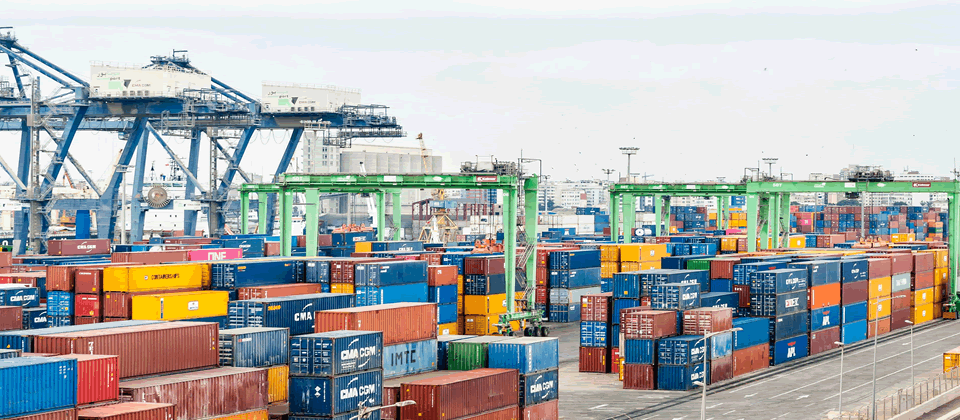Cost-Benefit Analysis
Broad-based Industry and Community Benefits

Safety is Paramount
The safety of staff and the community at large is a clear responsibility of the designer, installer, and those operating the infrastructure associated with this Container Freight Transfer Technology. The community segments include: – cyclists, pedestrians, domestic residents, office staff. Each participating organisation is to demonstrate their safety regime including monitoring and a rigorous corrective action process.
CF Technologies design will remove truck movements away from the port area and is centred on also removing the opportunities to fail both in safety and process control through the simplification of the supply chain described below. We are fully committed to extensive community and stakeholder consultation.
Careful monitoring of all incidents, together with a rigorous corrective-action process, will ensure continuous improvement for all aspects of safety.

Shipping
Loading and unloading ships to a dependable schedule is of significant importance to the shipping industry at large. Having shifted congestion away from the port and then controlling both the inbound and outbound activities, current queuing will be eliminated, thereby creating incremental port capacity.
The three-pipe configuration used in the CFT system is designed to cater for the following…
- Inbound Container traffic
- Outbound Container traffic
- Storage and provisioning for Detachable Drive Units
The current accumulation points and trucking movements will be relocated to the logistic hub where all container stacking and forwarding will take place. Maximum port efficiency will be attained as a result of consistent flow through the pipes, thus the turn-around times will be equally consistent and therefore schedulable to maximise port capacity.
The managing of the flow velocity within the tubes will enable conformance to schedule and eliminate bottle necks at each end of the tubes thus port agility is enhanced.

Customer
The redefining of the boundaries for current container loading and unloading processes is a fundamental aspect of our design. Minimising Port congestion will be achieved by removing the processes for repeated stacking and container-selection away from the port real-estate to a purpose-built logistics hub. The logistics hub can be 20 kilometres or more from the port. Current trucking activity between the port and the hub will be replaced with container transfer in pipes.
In this supply chain customers are numerous, including those sending or receiving containers, the shipping companies performing the “sea going leg”, the community surrounding the port area, and those conducting the administration throughout the process. It is the role of this technology to schedule and transfer items to and from the port and the logistics hub. DDUs will be attached to the Containers and placed in the pipe for transfer between port and hub, thus removing truck movements to and from the port. The Robotic DDUs will guide one or many containers in any batch size to and from the port. Port congestion is significantly reduced by the use of twin pipe-channels to service both inbound and outbound container traffic. The pipes can fan out to various locations within a dock area, thus providing direct access to multiple ship-side gantries.
Those dealing with the transfer of shipping containers to and from port(s) recognise the opportunity to simplify the “transfer supply chain” via pipes for the benefit of the numerous customers and society at large.

Net Present Value
The NPV is a calculation of the full life cost of a project. This calculation will include, the cost of funds, predictions of growth and utilisation. A time period will be established to compare project options in this case; rail or road solutions, that time period will include: – cost of funds, capital, maintenance, operation costs, refurbishment costs, benefits to society such as pollution emissions. The model will provide a yearly cash flow, enabling comparison for each option.
Benefits to society can also be included in this supply chain evaluation: – safety, pollution (both emissions and noise), removal of truck movements at the port, utilisation of port real estate, road incidents (traffic accident impacts financial and physical), reduction in road congestion, a net increase in road capacity.
The level of increased activity in all ports is in itself, creating an inability to expand. The growth in size and speed of ships leading to increased frequency and volume is debilitating for each port visit. The projections showing increased capacity for global shipping requires a step change in the container freight transfer supply chain management. The CF Technology will provide for shipping growth without significant disruption to the community in and around the port area.
The notional “cost to society” and the “benefit to society” are fundamental for this technology. The improved financial cost and the improved quality of life to society are major consequences of this technology.

Credibility
Universities, together with transport authorities and institutions, have provided encouragement and validation for the ongoing development process. A culture of continuous improvement is enshrined within our multi-skilled team, thus enabling an openness toward solutions that might significantly diverge from mainstream thinking. During the last three years the team and supporters have provided opportunities to enhance the mechanisms employed, and to “see the picture” from different perspectives. Change is often difficult to embrace. We are seeking enthusiastic PhD students to study the “here and now” and to reconcile this against future outcomes. This research is providing evidence and knowledge to a level where we are “knowing” rather than “speculating”.
True diversity has enhanced imagination and innovation. We have moved away from a mono engineering excellence to a multi-dimensional perspective which encompasses excellence and practicality.

Collaboration
In a supply chain aspect, the “port activities” are the catalyst for a country’s export and import competitive position. We are now in a position to expand our network to encompass any or all organisations wishing to enquire. We will be able to demonstrate the “here and now” against the future opportunities. As we embrace a greater diversity of perspectives we will increase or scope for practicality. Our vision is one of enhancement of port efficiency, to that end the need for open participation with specialist organisations is clear. Opportunity — Global organisations and sovereign authorities working together to attain excellence and practicality through joint ownership of this supply chain.
